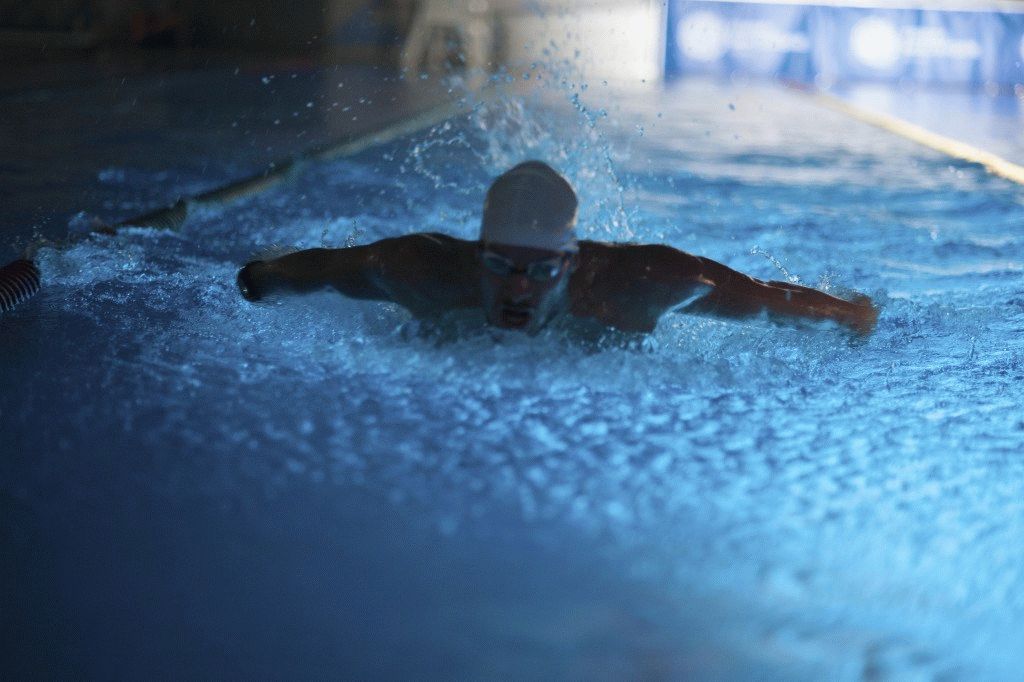A sentence that you often hear: “Swimming is a full-body sport, every muscle is moved!”
What’s true about it: Swimming with lifeguard classes is actually a sport for the whole body. It is clear that the arms and legs move. In order for this to work in a coordinated manner, the muscles of the torso have to hold everything together.
But: Anyone who now thinks that they can easily train their muscles by swimming is unfortunately wrong. The explanation for this is actually simple: in the water, the buoyancy relieves both joints and muscles. In other sports, such as jogging, the muscles work against gravity. When swimming, this task is partially relieved. In competitive sports, swimmers therefore often also do extensive strength training.
Building muscle also requires high levels of resistance, says Dr. Andreas Bieder from the German Sport University in Cologne. The conditions in the water are not ideal for this. “If I move my extremities quickly in the water, I get a lot of resistance,” says Bieder. “But the muscles can’t develop that much strength with fast movements.”
Swimming does not replace strength training
The concept behind it was described by the scientist AV Hill in 1938 in “Hill’s force-velocity relation”. It states that the rate of muscle contraction always depends on the force that is exerted. In other words, if you want to lift a certain load, the muscles always contract at the same speed. As the load increases, the contraction takes longer.
This also means that the faster the movement, the less force the muscle can exert – and not only in water. Hill’s observations actually apply to individual muscle fibers. However, an entire muscle consists of many different fibers, each of which is tied to Hill’s force-velocity relationship.
Untrained people can still see success in muscle building while swimming. Just don’t expect it to replace strength training.
Article section: What is the health benefit of swimming?
What does swimming do for your health?
First of all, swimming builds endurance. This applies not only to the muscles in the legs, arms and trunk, but especially to the lungs. Because when you swim, the water presses on your chest from all sides. So you inflate your lungs against an additional pressure that you don’t have on land. An increased lung volume in turn improves the pumping capacity of the heart and is ultimately good for the circulatory system.
According to the CDC (Centers for Disease Control and Prevention (CDCh), about two and a half hours of physical activity per week can reduce the risk of chronic diseases. This applies to swimming as well as jogging or cycling.
Swimming could reduce risk of death
A study also suggests that swimming significantly reduces the risk of death. Scientists from the University of South Carolina analyzed the data of over 40,000 men between the ages of 20 and 90 who had undergone a health examination between 1971 and 2003. Just over 3,300 of the men died during the time of the investigation. When the researchers looked at the physical activity of the men, they found that the risk of death in swimmers was reduced by around half compared to non-active men.
The authors also compared swimming to running and jogging. Surprisingly, there was also a clear advantage for swimmers here, with mortality being halved in each case. It must of course be said that these are only correlations. Statements about the direct connection cannot be drawn from such data. However, the authors eliminated age, weight and health factors before the analysis. The positive effects of swimming are not due to the fact that swimmers are particularly health-conscious or young.
Swimming might help with certain illnesses
There is evidence that swimming helps with diabetes and heart disease. However, the studies often examine specific target groups, so that the results cannot be generalized.
In 2016, for example, Chinese scientists showed that eight weeks of swimming training in overweight young adults improved blood pressure and stiffness in the arteries, as well as improved blood flow to the brain. Whether this also applies to people who are not overweight cannot be said on the basis of these data. Another 2016 study suggested that adults with arthritis in their joints can swim to improve pain, reduce stiffness, and build muscle strength. Cycling was just as helpful for this, though.
Many other studies are not directly about swimming, but about exercises in the water. This could benefit people with a wide range of medical diagnoses, from hemophilia or multiple sclerosis to Parkinson’s, dementia and autism to patients after a stroke. The quality of the analyzes differs depending on the study: How many participants were there, were there control groups – and if so, did the subjects practice another sport or were they inactive?
Consultation with doctor important
So if you have medical problems and want to relieve them with swimming or other water activities, it is best to talk to your doctor about it.
The basic rule for healthy people is: Exercise is good, it doesn’t really depend on the type. So if you have a swimming pool nearby, don’t like doing sports on land or just want to try it out, go for it.
Also read about:Prolapsed Uterus – Exercises That Help

